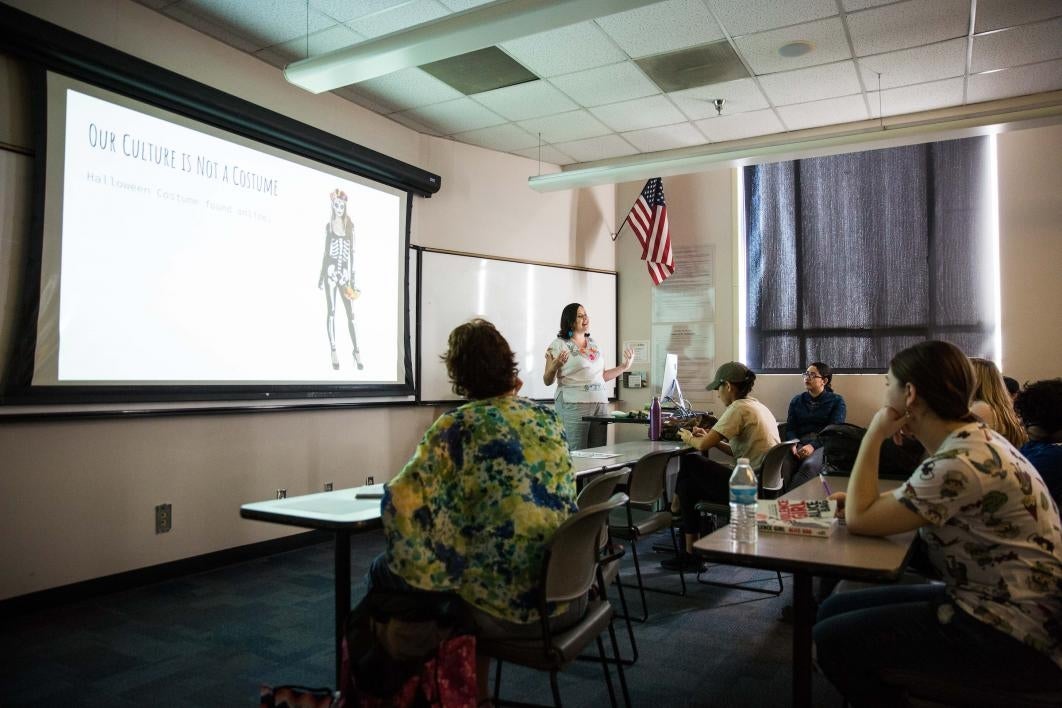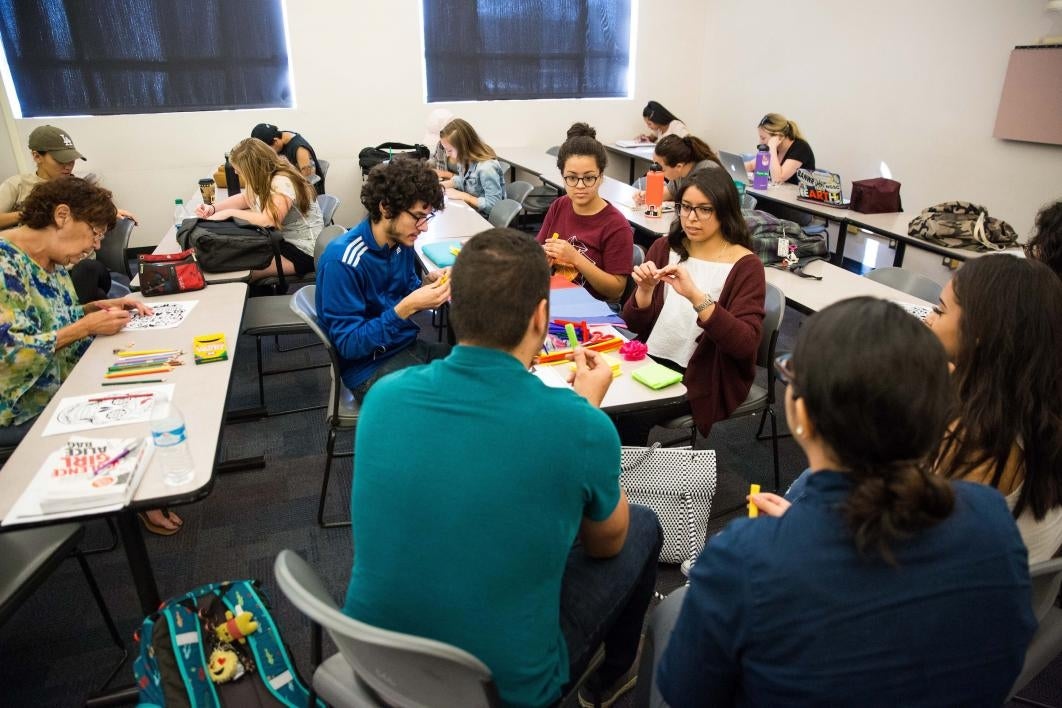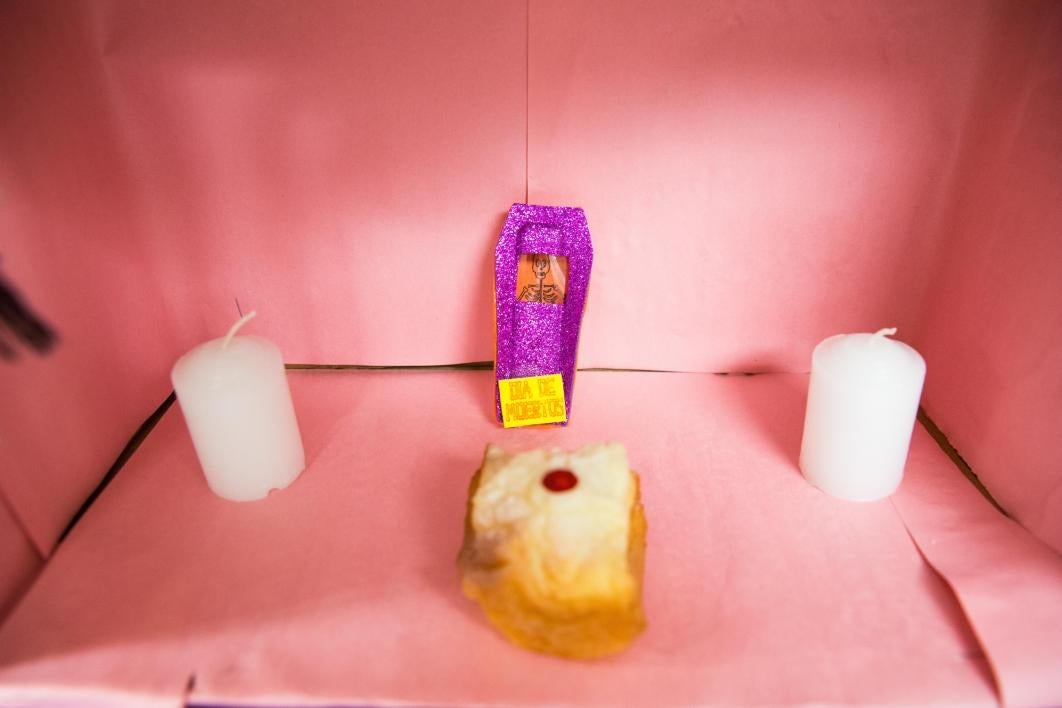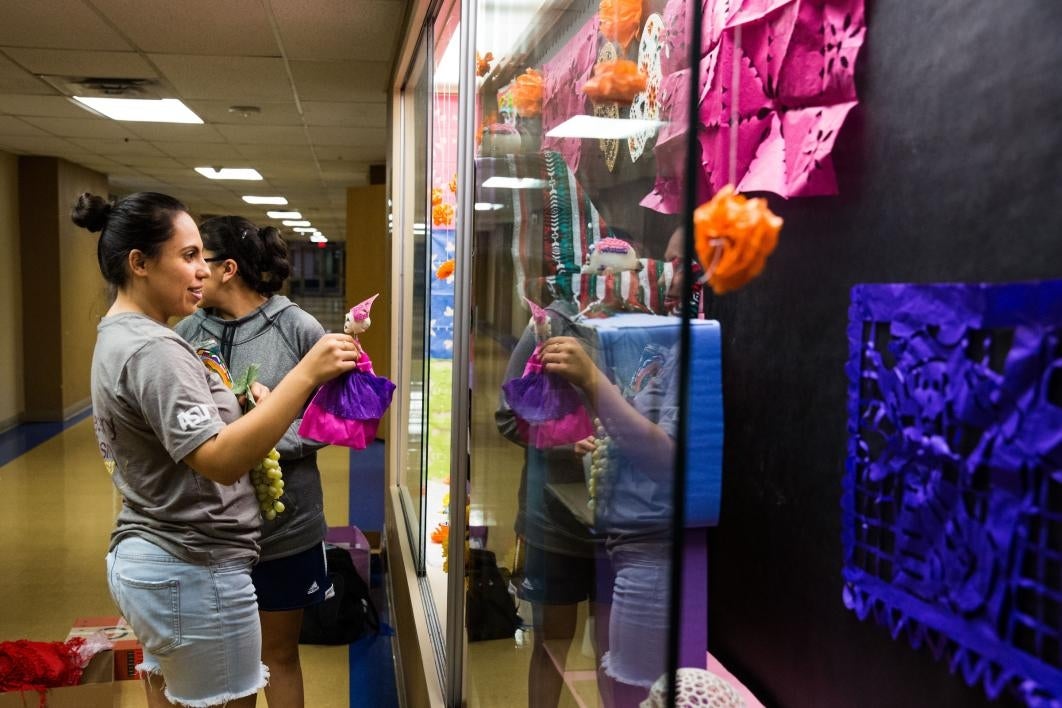Sugar skulls at craft stores and processions in James Bond movies — the imagery associated with Day of the Dead has spread through the United States and often the line between it and Halloween is blurred for many Americans.
However, while modern Halloween celebrations are all about costumes, candy and thrills, Dia de los Muertos is about honoring those who have passed.
Rather than mourn the deceased, the Mexican tradition celebrates their lives through their favorite foods, drinks and songs.
Assistant Professor Monica De La Torre, whose family did not regularly commemorate Dia de los Muertos, recognizes the appeal of the traditions to outsiders.
“That’s the beautiful part of the practice, it’s a constant remembering of that person that isn’t always tied to grief but tied to celebration and tied to happiness,” she said.
The two-day holiday is an amalgam of indigenous celebrations of death and the Roman Catholic calendar. It’s observed Nov. 1 and 2 — during All Saints Day and All Souls Day.
Some families create altars or boxes that contain symbols of the four classical elements — often represented through candles, incense, cups of water and corn. Other offerings that can be placed on the altar include salt, marigolds (Cempasuchil) and tercio rojo (cockscomb), pan de muertos (bread of the dead) and sugar skulls.
While not all families create altars, most will go to the grave of their loved one and tend to it and spend the day eating and drinking together with the deceased in spirit.
“We bring different foods for each person that we’re celebrating, sometimes we try to do their favorite food, sometimes it’s like tamales and arroz rojo,” said film junior Miguel Guteerriez.
“I would just hang out with my parents and my tios (uncles) and they would just sit in the cemetery next to graves.”
This year, Gutierrez and his classmates spent time making tissue-paper marigolds for the School of Transborder Studies altar, created by the Latinx Graduate Student Alliance.
Alejandra Nieland Zavala, an education policy graduate student and alliance member, originally introduced the idea to make the altar to her fellow graduate students.
“This is like the huge holiday for me, I can still remember as a little girl walking to the cemetery on Nov. 2 and cleaning the graveyards of my great-great grandparents, and leaving flowers and leaving their favorite foods. It makes me feel homesick so I was like I need to celebrate this special day, to remember where we’re from,” she said.
Nieland Zavala decorated the case with Calavera Catrina imagery that she created herself.
Mexican illustrator Jose Guadalupe Posada originally created the bust of a woman’s skeleton wearing a large fancy hat in the early 1900s, as a commentary on Mexico’s Eurocentric elite. The name we know today — Calavera Catrina — was dubbed by muralist Diego Rivera and over time has become a central Day of the Dead image.
Soon, the holiday will get even more recognition from “Coco,” a Disney movie about a young boy in the Land of the Dead, which will premiere in the U.S. next month. However, it originally received blowback in 2013 for attempting to copyright the name Day Dead.
“That goes hand in hand with the process of capitalizing or commercializing on a cultural holiday. But on the other hand it brings the visibility to the Latino community on a large scale,” De La Torre said.
In her Latina/o Media and Pop Culture class, De La Torre showed a slide of a “sexy day of the dead costume,” which was sold out online. She asked students to share their personal experiences celebrating the holiday and to share their opinions on the costume.
“You can’t control how people take on a cultural tradition, you can’t police people around that,” De La Torre said. “I think that’s the wrong move, I think the move is to educate.”
For De La Torre, those who want to utilize the Mexican holiday as their Halloween costume should ask themselves a simple question.
“The first thing is asking yourself some really basic questions around what your motivations are for doing it, whether or not you understand it. If you’re going to paint your face, do you know what the significance is of donning a skull on your face?”
If you can’t answer that question, De La Torre suggests researching the history and tradition because it’s too easy to erase Latinos — in particular Mexican and indigenous Mexicans from the holiday.
“I hope people see it more as a reward, that it is complicated, and if you make an effort to learn it and to really have an understanding, that goes beyond the fun aspect of it, right? To just take the fun is irresponsible, about any cultural aspect.”
More Local, national and global affairs

Arizona PBS is now free to stream for Prime Video viewers in the US
Arizona PBS is now available for streaming on Amazon Prime Video. A new partnership between PBS and Amazon brings the station’s primary, high-definition broadcast channel, along with the 24/7 PBS…

First-ever Taiwan Symposium at Thunderbird celebrates business, cultural connections
The investment by TSMC and other Taiwanese corporations in Arizona will reap dividends not only in thousands of new jobs but also in strengthened cultural connections and new methods of…

Study shows that trust drives successful market economies — but not in the way you may think
From fueling our cars to fulfilling daily coffee habits, the average U.S. cardholder makes 251 credit card transactions per year, according to Capital One.Each of these transactions are built…






